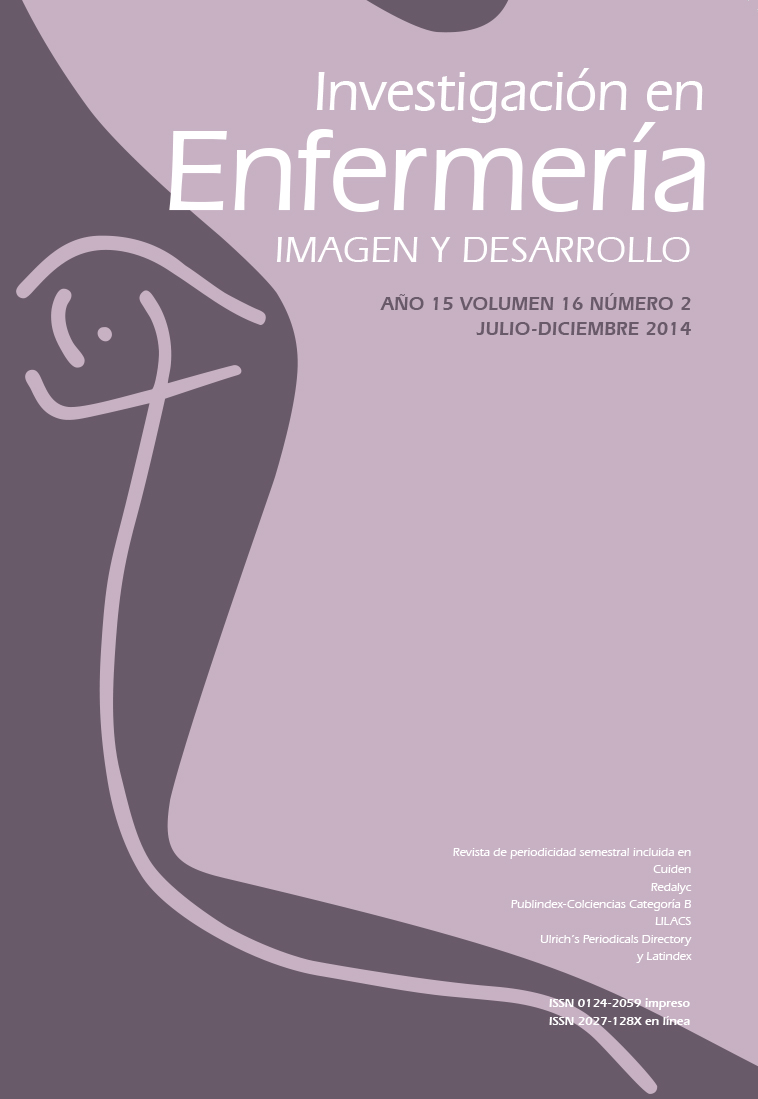Adaptive Response of Children with Low Cardiac Output Syndrome to Changes of Position in the Pediatric Intensive Care Unit
Published
Jul 1, 2014
Almetrics
Dimensions
##plugins.themes.bootstrap3.article.details##
Abstract
Introduction: Roy, in his adaptation model, suggests that a contextual stimulus as a nursing intervention generates in the human system an adaptive response that can be effective or ineffective. Objective: To describe and analyze the adaptive response in the physiological mode in infants 2-23 months of age with low cardiac output in critical condition, when performing daily nursing interventions in the pediatric intensive care unit. Method: Observational-descriptive quantitative approach and repeated measures design. The proposed indicators of positive physiological adaptation measured were: systolic blood pressure, heart rate and capillary refill. The sample (n= 75) was made up of children and infants. It was divided into three groups according to the severity of low cardiac output (n = 25). Statistical analysis: nonparametric analysis in SPSS 15 Wilcoxon, Kruskal-Wallis and chi-square. Boxplot graph analysis. Result: The nursing intervention (change of position) has a long and significant negative effect (p <0.05) in the physiological adaptive capacity of infants in critical condition; It depends on the severity of low cardiac output: the greater severity of low cardiac output, the greater the presence of ineffective adaptation. Conclusions: It is possible to quantify the physiological adaptability of a human system through sensitive and specific indicators of positive physiological adaptation. The technique, duration and frequency of changes in position of the infant with low cardiac output in critically condition should be a nursing decision based on hemodynamic response and care needs of each patient.
Keywords
adaptação, lactente, débito cardíaco baixo, atendimento de enfermagem, unidades de terapia intensiva pediátricaadaptation, infant, low cardiac output, nursing care, pediatric intensive care unitsadaptación, lactante, gasto cardiaco bajo, atención de enfermería, unidades de cuidado intensivo pediátrico
References
How to Cite
Ramos Garzón, J. X., & Guáqueta Parada, S. R. (2014). Adaptive Response of Children with Low Cardiac Output Syndrome to Changes of Position in the Pediatric Intensive Care Unit. Investigación En Enfermería Imagen Y Desarrollo, 16(2), 114–132. https://doi.org/10.11144/Javeriana.IE16-2.rans
Issue
Section
Original Research Articles


